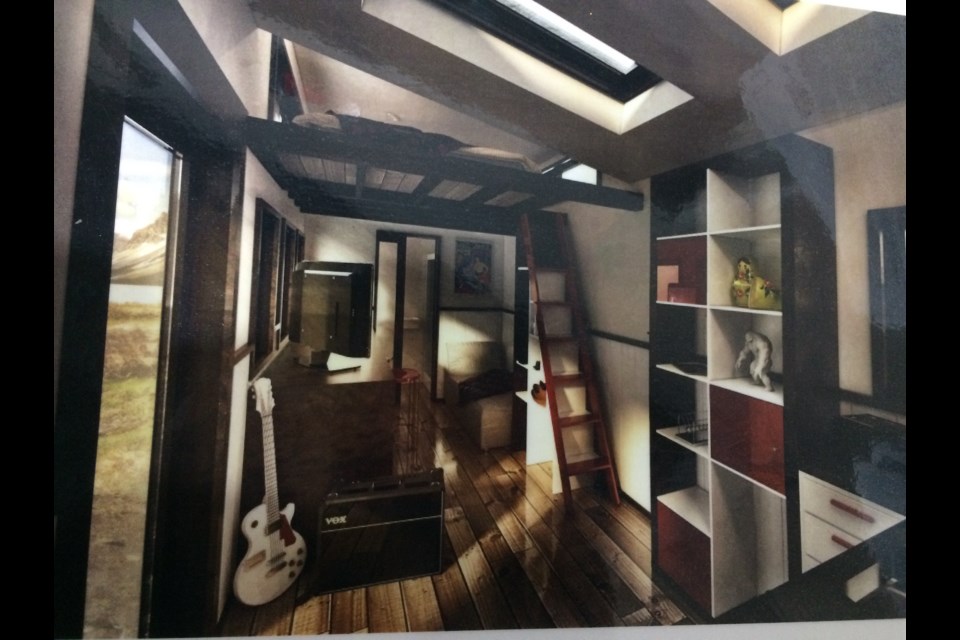Housing needs to be designed for people, not to fit with municipal regulations, Midland Mayor Gord McKay told a Simcoe County affordable housing innovations forum on Wednesday.
Three years into its 10-year affordable housing plan, Simcoe County has created just over 400 affordable units, including 54 especially for seniors on Brooks Street in Barrie, but the county has a target of 2,685.
“We still need to talk about housing designed for the person. This is the home wrapping around the individual and there’s some very creative ideas,” said McKay.
“It’s not just about the numbers. We need to craft new methods, new partnerships and new resources. How can we fund things differently?”
During the day-long forum at the Simcoe County Museum, 85 planners, politicians, developers and builders brainstormed on options as well as what the county could do to help make the new options happen.
“Let’s get serious,” said McKay. “If the bottom line doesn’t make sense to the private sector, it’s not going to happen. What can we do to improve the bottom line?”
Municipalities have an array of tools, including tax incentives, development charge discounts and grants.
Municipalities have also enabled the construction of second suites and garden units.
But Wednesday, tiny homes and shipping container homes were put on the table for discussion.
The initial cost for a very small home may be more per square foot at the beginning, noted the Tiny House Construction Company, but the savings are enjoyed over the longer term, because the 300-square-foot homes are efficient not just in terms of space, but in terms of energy consumption.
Accommodating individuals or couples, the homes are 8.5 feet wide and are available in several lengths, depending on space needs and preferences. Because of their design, however, they are not accessible for those with physical disabilities.
Shipping container homes can range from 9,000 square feet to 80,000 square feet, according to InvestorCentric’s Teresa Oliver. They can accommodate average income families, seniors and students.
Custom modular homes are gaining popularity as cottages, said the Canada Builds Company, which came to Midhurst from Lindsay.
Simcoe County’s planning director David Parks suggested the county look at obtaining a research grant, possibly from the Canada Mortgage and Housing Corporation, which supported the forum with a grant.
“Perhaps there’s an opportunity for a research grant to come up with solutions and take them to the building code. We can use the brain power of enthusiastic kids,” he said, who see possibilities and opportunities, not just rules and regulations.
Clearview Township planner Mara Burton suggested a municipality could create a tiny home pilot project or convert a former school to living units. The school, she noted, might have adequate space for what’s being called a Golden Girls’ scenario – a living arrangement made popular by the former television comedy.
“Each person has their own bedroom and sitting area and there’s a shared kitchen,” she said, with possibly space for a live-in support person if necessary.
Tay Township Deputy Mayor Dave Ritchie added modular homes need to be studied.
“Half the homes in Florida are prefab and modular. What are the barriers? Money, ownership, bylaws and legislation,” he said.
The county has several affordable housing projects at various stages in the planning and development process, including 55 units in downtown Alcona.
Arfona Zwiers, Simcoe County’s social housing director, said the range of options being discussed at the forum was impressive and the ideas need to be further assessed.
“Each comes with different sets of challenges,” she said. “Tiny homes are in a grey area in terms of zoning. The shipping containers are ideally suited for bachelor units.
“The challenge is to take these opportunities and figure out for which population (group) and where. Is there a style best suited to a rural scenario or to an urban context, or to seniors vs. families.”
Forum participants also noted some of the biggest barriers to affordable housing are stigma and NIMBYs who take their opposition all the way to the Ontario Municipal Board.



